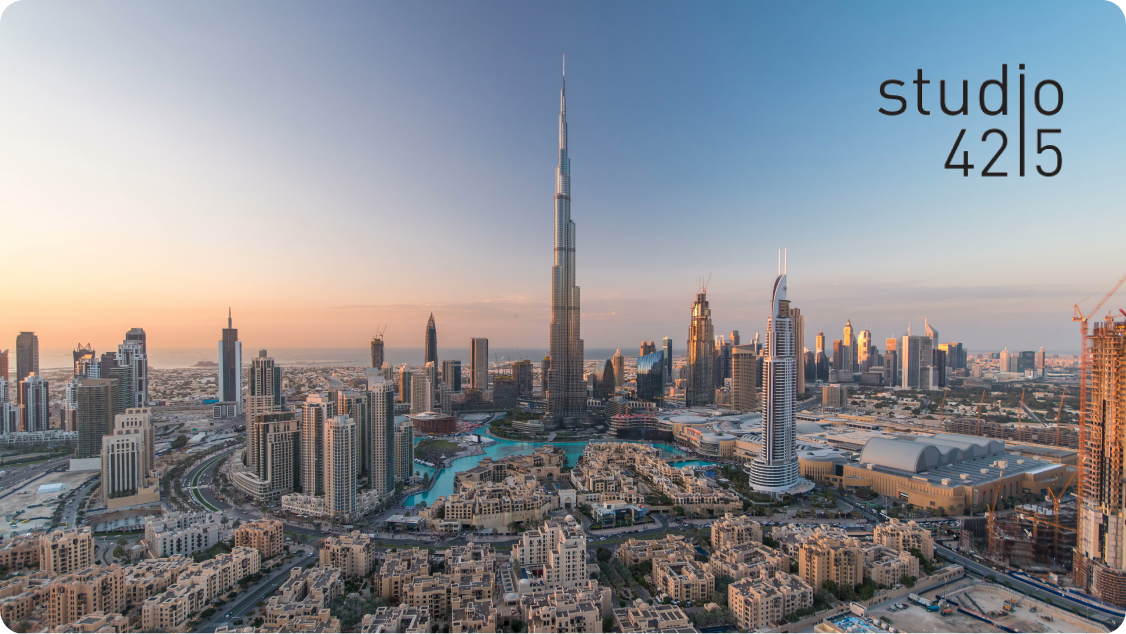
Dubai, known for its rapidly evolving urban landscape, regularly faces soaring summer heatwaves, with heat and humidity creating challenging conditions for its inhabitants. The need for innovative solutions to enhance outdoor comfort and reduce urban heat has never been more pressing. Passive design interventions, modeled through ENVI-met, show that perceived temperatures in the city can be reduced by 10°C-15°C, making outdoor spaces significantly more comfortable for pedestrians.
The simulation, conducted by Studio 4215, focused on two distinct areas in Dubai: the historic Deira district and the modern surroundings of the Burj Khalifa. These locations offer insights into how urban density, building height, and landscape design affect outdoor thermal comfort. Both areas face challenges from extreme daytime heat and sharp temperature shifts between day and night, but passive cooling strategies can help mitigate these effects and enhance outdoor comfort.
Why Dubai is a meaningful case for addressing urban heat
Dubai presents a microcosm of urban extremes. The compact, dense fabric of Deira, where narrow streets and closely spaced buildings offer significant shading, and the expansive, open layout around the Burj Khalifa create contrasting environments. These two areas illustrate the city's old and new urban designs, making them ideal for a comparative study on how different approaches to urban planning affect outdoor comfort.
The contrasts in Dubai’s urban fabric also show how temperatures and comfort levels can change dramatically within short walking distances. For example, while one area may benefit from shading created by closely spaced buildings, another may experience intense heat due to the lack of greenery and shade. The case study analyzed these conditions and proposed a set of interventions to enhance outdoor comfort through passive cooling strategies.

Results of implementing passive cooling strategies
The analysis revealed that both Deira and the Burj Khalifa area struggled with outdoor comfort during the day, particularly in peak summer months. However, the results showed that targeted interventions could lead to significant improvements in thermal comfort. Native vegetation can reduce temperatures by 5°C-10°C, while solid shading can lower them by 10°C-15°C, making outdoor spaces more comfortable.

In Deira, the dense urban fabric proved advantageous for containing and amplifying the benefits of passive cooling strategies. Shading from closely spaced buildings and the introduction of vegetation helped lower heat stress levels from “Extreme” to “Moderate.” This improvement not only makes outdoor spaces more usable but also encourages people to engage with their environment, potentially leading to a behavioral shift toward greater outdoor activity.
Around the Burj Khalifa, while the open layout presents more challenges, strategic interventions — such as installing large canopies and increasing green spaces — were still effective. Though the scale of the Burj area made improvements more moderate compared to Deira, there is clear potential for further development. Pedestrian pathways can be shaded, and landscape elements like water features can be incorporated to reduce heat stress and enhance comfort.

A roadmap to reducing urban heat in Dubai
The ENVI-met simulations showed that both Deira and the Burj Khalifa area have great potential for reducing urban heat through passive cooling techniques. The ability to reduce perceived temperatures by 10°C-15°C highlights the critical role that urban planning and passive design can play in creating livable outdoor spaces. Both Deira and the Burj Khalifa area show that with the right strategies, even the hottest cities can offer pleasant and comfortable environments for residents and visitors.
This research underscores how cities in hot climates can learn from Dubai’s experience. By applying passive cooling techniques and rethinking urban density, cities can mitigate the effects of urban heat, encourage outdoor activity, and improve overall quality of life. For urban planners and architects, this study provides a roadmap for transforming outdoor spaces and ensuring that future urban developments prioritize comfort and sustainability.
How ENVI-met helps architects and urban planners reduce urban heat worldwide
ENVI-met is a 3D microclimate simulation software used globally by architects, urban planners, and environmental consultants to analyze and predict outdoor thermal comfort and the effects of various design strategies. By simulating the interaction between buildings, vegetation, and atmospheric conditions, ENVI-met helps users test strategies to optimize urban design for reducing urban heat.
Carbon Experts Newsletter
Industry news & insights — straight to your inbox
Want to learn more?
Asha Ramachandran • Aug 27 2025
Roberta Belanova • Oct 03 2024
Roberta Belanova • Sep 23 2024
Muhammad Ali Saleem • Oct 23 2024
